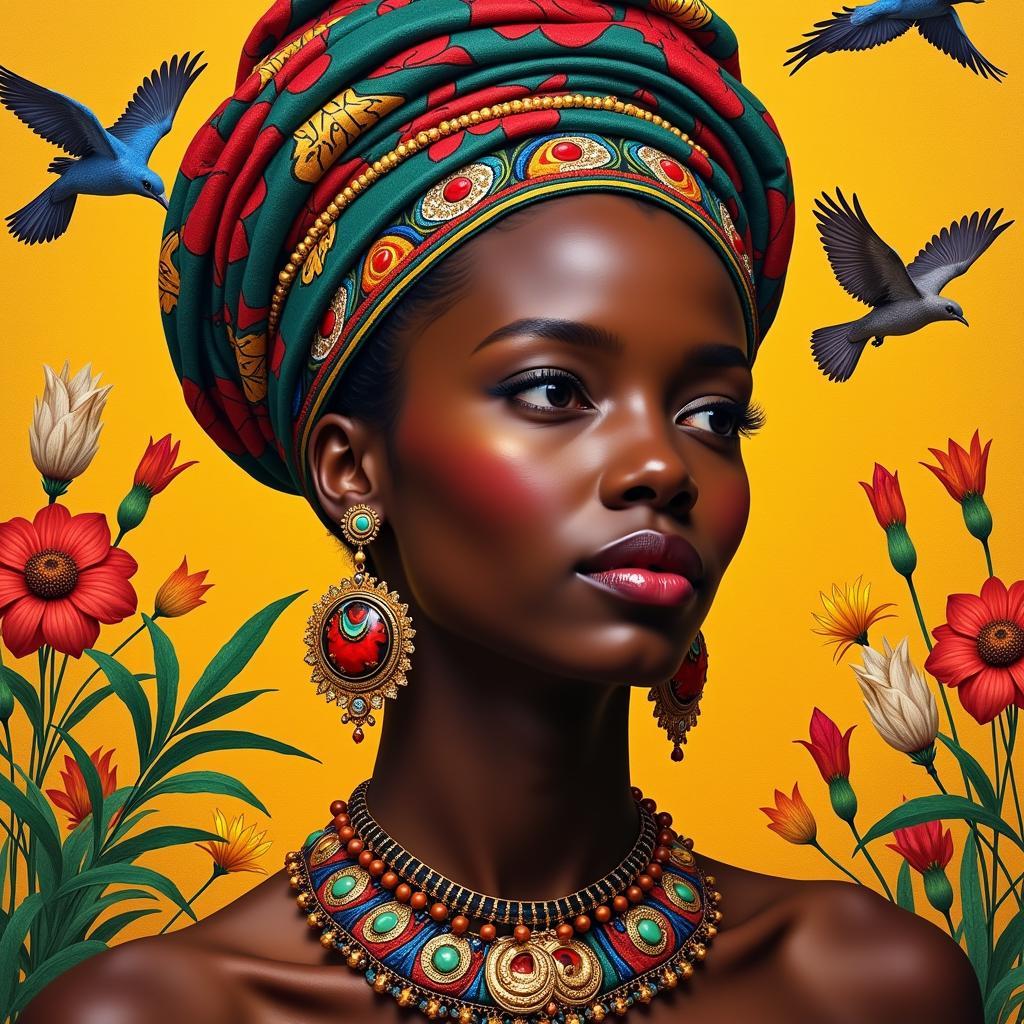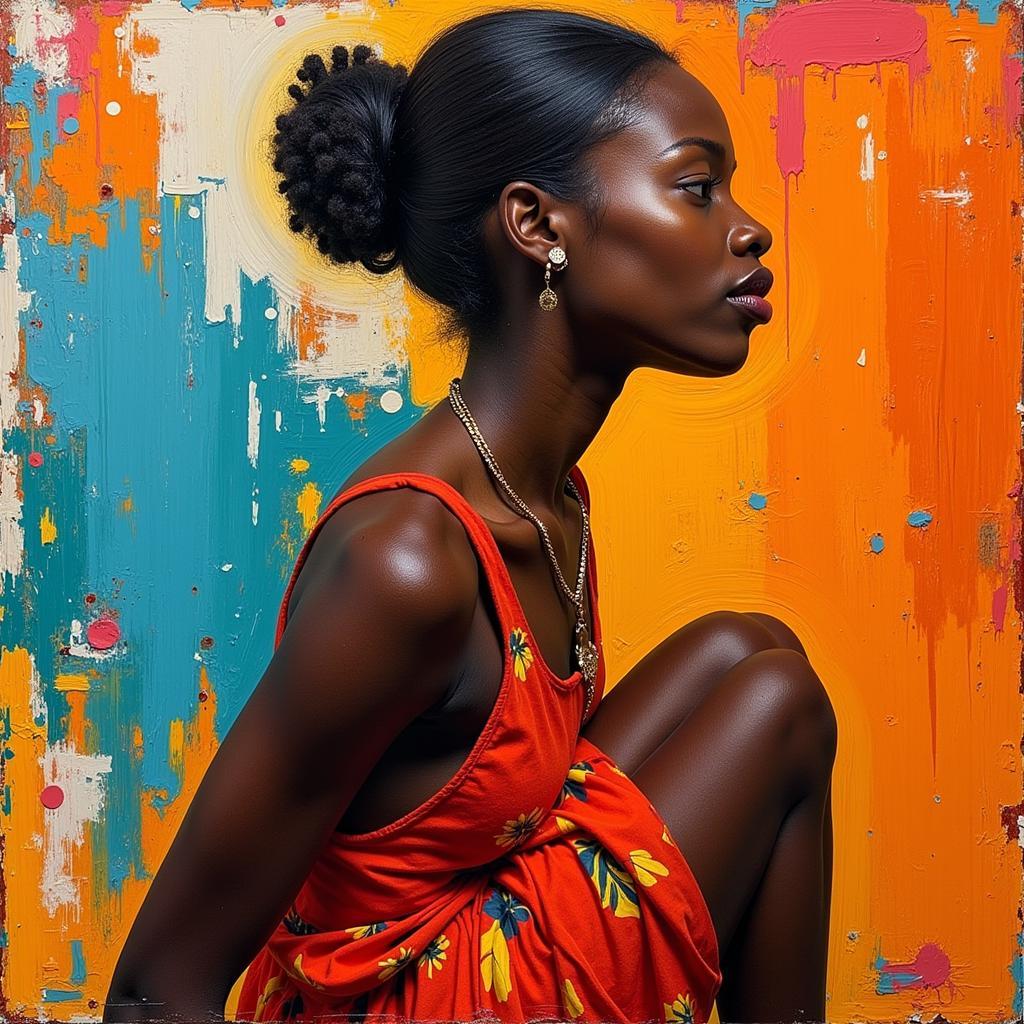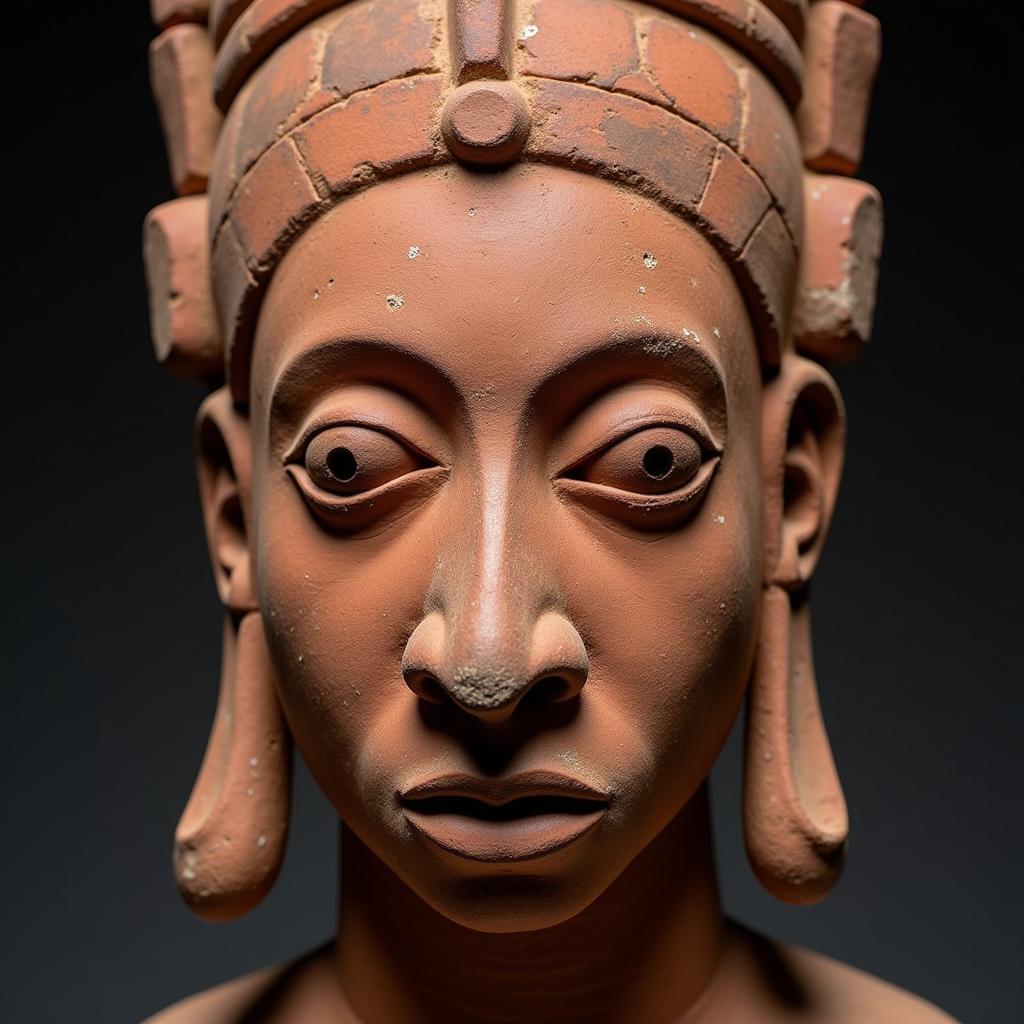Unveiling the Allure: The Story Behind African Lady Painting
African Lady Painting, a vibrant genre rich in symbolism and cultural narratives, offers a captivating window into the heart of Africa. Beyond mere aesthetics, these artworks serve as powerful expressions of identity, beauty, strength, and the multifaceted experiences of women in diverse African societies.
More Than Just a Pretty Picture: Understanding the Depth of African Lady Painting
African art, unlike Western traditions often focused on realism, leans heavily on symbolism and abstract representation. This is especially true when depicting people.  African Lady Portrait Symbolism Every element, from the colors used to the objects surrounding the lady, carries meaning, whispering stories about her social standing, role in the community, and even her inner world.
African Lady Portrait Symbolism Every element, from the colors used to the objects surrounding the lady, carries meaning, whispering stories about her social standing, role in the community, and even her inner world.
Decoding the Visual Language: Common Themes and Symbols
To truly appreciate an African lady painting, one must learn to decipher its visual vocabulary. Here are some recurring themes and their interpretations:
- Headwraps and Hairstyles: Elaborate headwraps, often made with brightly colored fabrics, signify marital status, social hierarchy, or specific occasions. Similarly, intricate hairstyles, like braids adorned with beads, convey messages about identity and heritage.
- Jewelry and Adornment: The type and quantity of jewelry worn by the lady often reflect her wealth, status, and cultural background. Beadwork, in particular, plays a significant role in many African cultures, with specific colors and patterns holding symbolic meanings.
- Body Art and Scarification: In some cultures, body art like scarification or painted designs serve as markers of identity, lineage, or personal achievements. These markings tell stories of resilience, beauty standards, and cultural heritage.
- Everyday Objects and Activities: The inclusion of everyday objects, like pottery, baskets, or farming tools, offers insights into the lady’s daily life and role within her community. Depictions of activities, such as dancing, storytelling, or childcare, further illuminate the richness and diversity of African women’s experiences.
The Evolution of African Lady Painting: From Traditional to Contemporary
The journey of African lady painting mirrors the continent’s dynamic cultural landscape. Early examples, often found in cave paintings or on ceremonial objects, offer glimpses into ancient beliefs and societal structures.  African Lady Abstract Art Colonial influences brought new artistic techniques and materials, leading to stylistic shifts and the emergence of portraiture as a distinct genre.
African Lady Abstract Art Colonial influences brought new artistic techniques and materials, leading to stylistic shifts and the emergence of portraiture as a distinct genre.
The Rise of Modern and Contemporary Expressions
The mid-20th century witnessed a surge in Pan-Africanism, inspiring artists to reclaim their cultural identities and challenge colonial narratives. African lady painting became a powerful tool for social commentary, celebrating female strength, resilience, and the struggle for equality.
Contemporary African artists continue to push boundaries, experimenting with new mediums and styles while staying connected to their roots. The digital age has opened up new avenues for showcasing and celebrating African lady painting, attracting global audiences and sparking important conversations about representation, identity, and the power of art.
Owning a Piece of Africa: Where to Find and Buy African Lady Paintings
The growing interest in African art has made it more accessible than ever before. Here are a few ways to acquire your own piece of Africa:
- Art Galleries and Dealers: Reputable galleries specializing in African art offer a curated selection of paintings from established and emerging artists. They can provide valuable insights into the artwork’s provenance and the artist’s background.
- Online Marketplaces: Online platforms dedicated to African art have made it easier to discover and purchase paintings directly from artists or collectors worldwide. However, it’s crucial to verify the authenticity and legitimacy of the seller and the artwork before making a purchase.
- Fair Trade Organizations: Supporting fair trade organizations that work directly with African artists ensures ethical sourcing and fair compensation for their work. These organizations often provide background information about the artists and their communities, adding another layer of connection to the artwork.
Conclusion
African lady painting is more than just a decorative element; it’s a vibrant tapestry woven with stories, traditions, and the indomitable spirit of African women. By understanding the symbolism and appreciating the diverse styles, we can begin to unravel the rich cultural narratives embedded within each brushstroke. Whether you’re an art enthusiast, a cultural explorer, or simply captivated by the beauty of these artworks, owning an African lady painting is an investment in a piece of history, a celebration of diversity, and a testament to the power of art to connect us across cultures.



